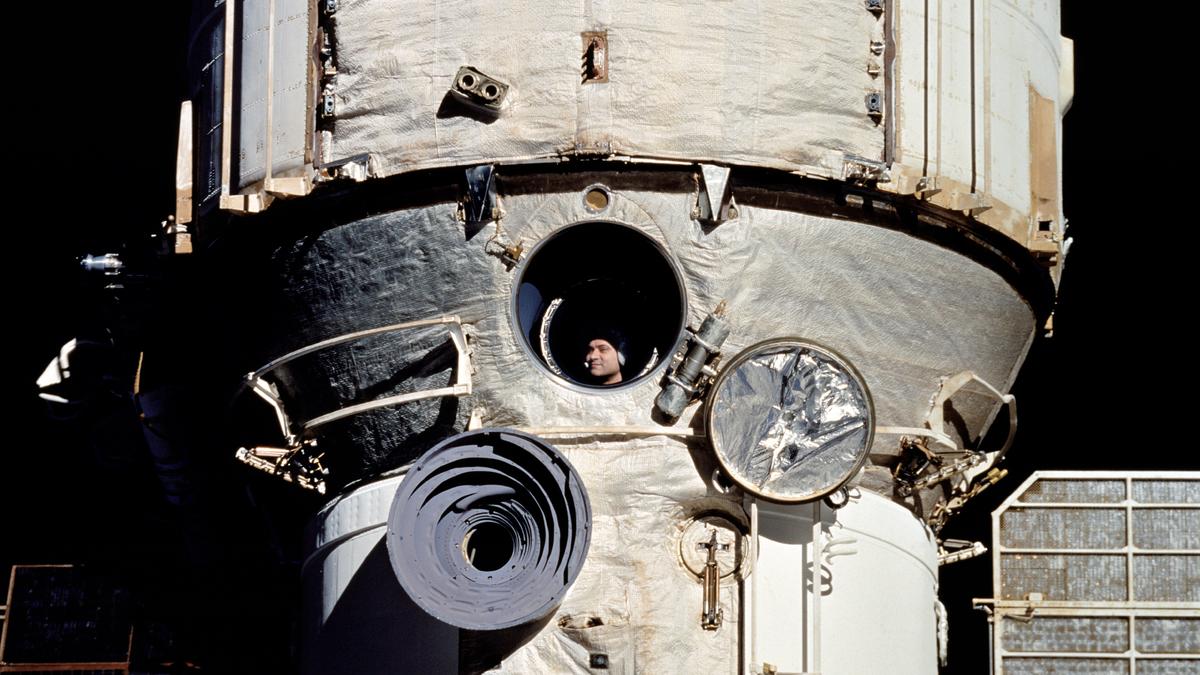
The many firsts of the near-Mir mission
The Hindu
The STS-63 mission, more popularly dubbed as the near-Mir mission, was a successful mission that spanned from February 3-11, 1995. A mission that served as a dress rehearsal for later missions that would rendezvous and dock with Mir, STS-63 reeled off a number of firsts. A.S.Ganesh tries and lists them out for you…
Docking in space or space docking is a space-tech marvel that enables us to join two spacecraft together in space. An important step for various missions, especially those that are exploratory in nature or involve space stations, only a handful of countries have mastered this art. India is now one of them, having become just the fourth country to do so after the U.S., Russia, and China, by successfully demonstrating docking as part of the Space Docking Experiment (SpaDeX) mission in January 2025.
Space docking has now been carried out for nearly 60 years, ever since NASA’s Gemini 8 spacecraft docked with an uncrewed Agena Target Vehicle on March 16, 1966. In addition to these docking missions, there are many others that lead up to successful docking. The STS-63 mission was one such mission that acted as a dress rehearsal, paving the way for STS-71, the first docking of the space shuttle with the Mir space station.
When the STS-63 crew – commander James Wetherbee, pilot Eileen Collins, payload commander Bernard Harris Jr., and mission specialists Janice Voss, Michael Foale, and Vladimir Titov – was first announced in late 1993, they might not have imagined that their mission would pan out the way it eventually did. Titov’s inclusion made this the second shuttle mission with a Russian cosmonaut, as the Cold War foes were coming together in space ventures – efforts that eventually resulted in the construction of the International Space Station (ISS).
Initially scheduled for launch in May 1994, a series of high-level agreements between the U.S. and Russia led to STS-63 being chosen to demonstrate space shuttle Discovery’s capacity to rendezvous with Mir. As the plans evolved, launch dates were pushed to early 1995.
By the start of 1995, the launch date was fixed for February 2. While there were 20 experiments that were going to be conducted aboard the Spacehab-3 module, the planned rendezvous on the fourth day of the flight garnered the most public attention. The mission earned the nickname “near-Mir” from the media as the launch day grew nearer.
Failure of one of Discovery’s three Inertial Measurement Units (IMUs) meant that launch was pushed by 24 hours to February 3. History was made when the crew of STS-63 rocketed away from the Kennedy Space Center. This was because Collins was occupying a front row seat in the spacecraft, becoming, in the process, the first female to serve as a space shuttle pilot.
Even though Discovery made it to the preliminary orbit in nine minutes, the days leading up to the rendezvous weren’t without incident. Few of the 44 Reaction Control System (RCS) thrusters exhibited irregularities, including a nose-mounted thruster that began leaking.





















 Run 3 Space | Play Space Running Game
Run 3 Space | Play Space Running Game Traffic Jam 3D | Online Racing Game
Traffic Jam 3D | Online Racing Game Duck Hunt | Play Old Classic Game
Duck Hunt | Play Old Classic Game











